They sent over a young archaeologist by the name of Amos Kloner. He climbed into the tomb and came out literally shaking. I’ll never forget. I asked him what he saw and he repeatedly muttered ‘I never saw such a thing….I never saw such a tomb.’
Last year Simcha Jacobovici posted a new eyewitness account of the initial discovery of the Talpiot “Patio” tomb in April, 1981 by Avraham Leket. Unfortunately, due to a bit of “Talpiot Tomb Fatigue Syndrome,” on the part of some of my colleagues, this important bit of new evidence did not receive too much attention. What follows is a quick overview review of the latest including a “bombshell” that nearly knocked me off my chair!
The “Patio” tomb is the intact one that is presently under a condo building with seven ossuaries including the one with the Jonah image and the “resurrection” inscription, just yards away from the more famous “Jesus family tomb,”–but located on the same ancient estate. Avraham Leket worked at the time for the building company carrying out construction at the site when the tomb was found. He was the one who first called the Israel Antiquities Authority when the drill they were using punched through the roof of the tomb and he was present when the young archaeologist Amos Kloner first entered the tomb. Here is Leket’s report as published by Simcha here:
“My name is Avraham Leket. I saw your films on the Talpiot tombs (“The Lost Tomb of Jesus” and “The Resurrection Tomb Mystery”). And I want you to know that, at the time that Talpiot was being built up, I was working for the building company Shikun Ovdim, which was responsible for part of the site. The site supervisor was a man by the name of Eli Parsi. When he went on vacation, I filled in for him. As we were drilling, the drill went through the roof of a burial cave [i.e., the Patio tomb]. I realized we had hit an archaeological site and I called the Antiquities Authority. They sent over a young archaeologist by the name of Amos Kloner. He climbed into the tomb and came out literally shaking. I’ll never forget. I asked him what he saw and he repeatedly muttered ‘I never saw such a thing….I never saw such a tomb.’ He took out one ossuary that did not weigh much because it was small, belonging to a child. But then religious people got involved. They didn’t want the tomb disturbed. Things shut down for the Sabbath and after that Eli Parsi came back to work.” Mr. Leket said that he hoped the information was helpful. It’s very helpful, Mr. Leket.
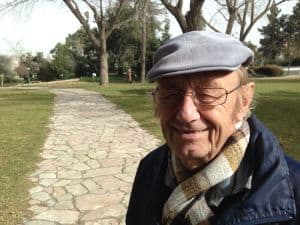
What Kloner saw that day and what happened next is a subject of much confusion and contradictory testimony that we tried our best to sort through in our book, The Jesus Discovery, published in 2012, with full primary source documentation. An article published in the now defunct newspaper Davar, in May, 1981, had tantalizingly hinted at “rare” or “unique” ornamentation. But this is the first we have heard of Amos Kloner’s amazement at what he found in this tomb which he has since said was entirely “ordinary.”
After we published our book something entirely new surfaced–which rather than clearing the air, added more to the confusion. Prof. Amos Kloner gave lecture at Bar Ilan University on December 27, 2012 at the “New Studies on Jerusalem Conference” on his original exploration of the Talpiot “Patio” tomb in 1981. Kloner’s intention was to “set the record straight” and more specifically, to counter what he considered to be the sloppy and sensational interpretations of Simcha Jacobovici and me, based on our IAA licensed 2010 re-examination of this sealed tomb by robotic camera with archaeologist Rami Arav.
Just to review a bit here. We have argued that one of the ossuaries in this tomb contains an image of a fish spouting out Jonah–with the name “Yonah” (יונה) clearly inscribed across the image, see here. Next to it there is a second ossuary that has a four-line Greek inscription referring to “lifting up” or resurrection of the dead. We further maintain that both the inscription and the Jonah image most likely came from Jewish followers of Jesus who are affirming faith in resurrection of the dead. The main outlines of my argument I presented in a technical paper posted on-line at Bible & Interpretation here, as well as in a co-authored book that extensively deals with the evidence from both of the Talpiot tombs, The Jesus Discovery (Simon & Schuster, 2012). When the book and the article were published in February 2012, the American Schools of Oriental Research (ASOR) devoted the month of March to an open discussion of these finds and their interpretation on its blog, sparking a heated and controversial series of posts and comments with diverse points of view. The Israeli magazine Eretz made our discoveries and the resulting controversy a cover story of the May issue with the provoking article, “Who’s Afraid of the Tomb of Jesus?” which you can read here:
Prof. Kloner offered no input whatsoever to the month-long ASOR discussion so we now hear for the first time his views on the subject. He now reveals that he thinks the “Jonah” image is not a fish at all but a vase or “amphora,” and that the Greek inscription has nothing to do with resurrection but rather is a prohibition against disturbing bones. These various alternative interpretations, along with the idea that the “fish” is a “funerary tower,” were debated extensively on the ASOR blog and at subsequent ASOR meetings, with papers on all sides of the debate now archived at the Bible & Interpretation web site here. I have read a transcript of Kloner’s oral remarks, which I make available to readers here:
You can view a his much longer paper in Hebrew here.
Kloner’s paper immediately generated an Op-Ed in the Times of Israel in which Matthew Kalman offered a very balanced overview here. Simcha Jacobovici, who was present at the lecture recorded his initial impressions which you can access here.
Simcha Jacobovici subsequently posted a long and probing piece based on his more carefully reading of Kloner’s published paper in Hebrew, which you can read here. Simcha and I have very different styles and I consider Amos Kloner a colleague and a friend, but the various problems he notes with Kloner’s account of the events of 1981 are serious and myriad.
What jumped out at me when I read the full paper was that there is nothing Kloner reports seeing in 1981 that adds anything to our own camera probe discoveries in 2010, other than his reported “count” of how many individuals’ bones were in each ossuary–the basis of which one has to wonder. All the rest of the data were precisely what we reported. [1]One example. Kloner had previously written in the publications below that there were “two Greek names” inscribed on ossuaries in this tomb. He says nothing about iconography or a Greek … Continue reading
Most puzzling to me is the drawing Kloner publishes in his paper of the ossuary with the “Jonah and the fish” image. Kloner says that he made this sketch, along with another one of the ossuary with the Greek inscription, in 1981 while briefly inside the tomb. Why he had never revealed these before, not even to his co-author Shimon Gibson with whom he wrote his definitive paper on the Talpiot tombs for the forthcoming Charlesworth volume remains for him to answer. [2]See Amos Kloner and Shimon Gibson, “The Talpiot tomb Reconsidered: The Archaeological Facts,” in The Tomb of Jesus and His Family? Exploring Ancient Jewish Tombs Near Jerusalem’s Walls: The … Continue reading The sketches are not in the Israel Antiquities Authority excavation files nor has anyone to my knowledge ever seen them before. We do know that the positions of these two ossuaries was different in 1981 from where they are today in the niches and the “Jonah” ossuary was not blocked from view in 1981 as it is today. So Kloner could have easily made such a sketch, or even better, taken a photo of both ossuaries.

Here is the problem. We were not able to see the entire front of the ossuary with the Jonah image. That ossuary is blocked by the one with the Greek inscription right in front of it, butted up to a few centimeters against its face. You can see here our camera coming into the niche with these two ossuaries up against one another. The one in the back is the one with the “Jonah” image, and just enough of the left side of that ossuary was visible to us to make out the image and get fairly good photos. It was the right side of the ossuary that remained a mystery to us. Our camera caught the bare beginnings of the square “temple” like structure on the right side, but what was inside that structure that we could not see clearly. In his paper Kloner is quite interested in this structure and offers analysis as to its possible meanings–but without mentioning anything about its important internal features–which would surely reveal more as to what the artist was wanting to portray.

When we had our replicas made this became a real problem. Since we could not see clearly the right side of this ossuary how should it be presented? In our first attempt, which was the ossuary displayed in New York at our February 28th press conference, the artisan took our limited photos of the right side and could barely make out something inside the “temple” and tried to represent it partially. This caused no end of problems because what he ended up with looked like some kind of “hangman’s gallows.” This led to endless speculation on those who saw the reproduction as to what the mysterious hidden meaning of this marking might be. The truth is this was simply all we could make out with our camera shots and it would have been best to leave the space blank.
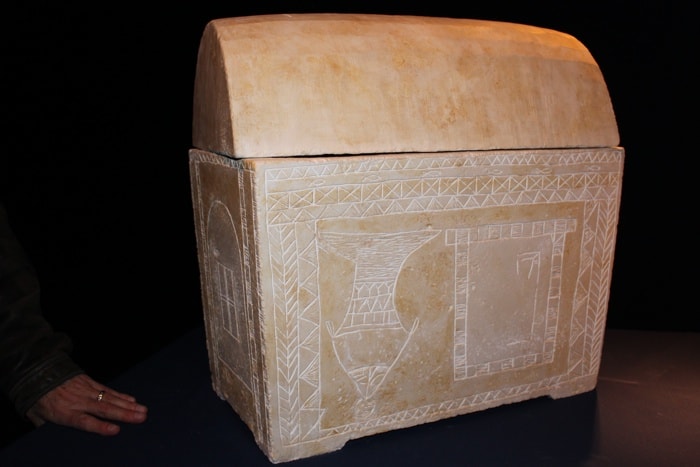
When we had a second set of ossuary reproductions made in Israel for our subsequent press conference in Jerusalem on April 4th we wanted to do whatever we could to improve our first attempt. We made the Jonah fish image a bit fatter, having reexamined all our photos, and most important Simcha and I advised Felix Gobulev, the Associated Producers technical expert who was working with the artisans, to simply leave the inside of the temple-like structure blank. There was something substantial inside, but since we could not see what it was, why offer a partial sketch that could end up being misleading? Accordingly, the second reproduction looked like this:
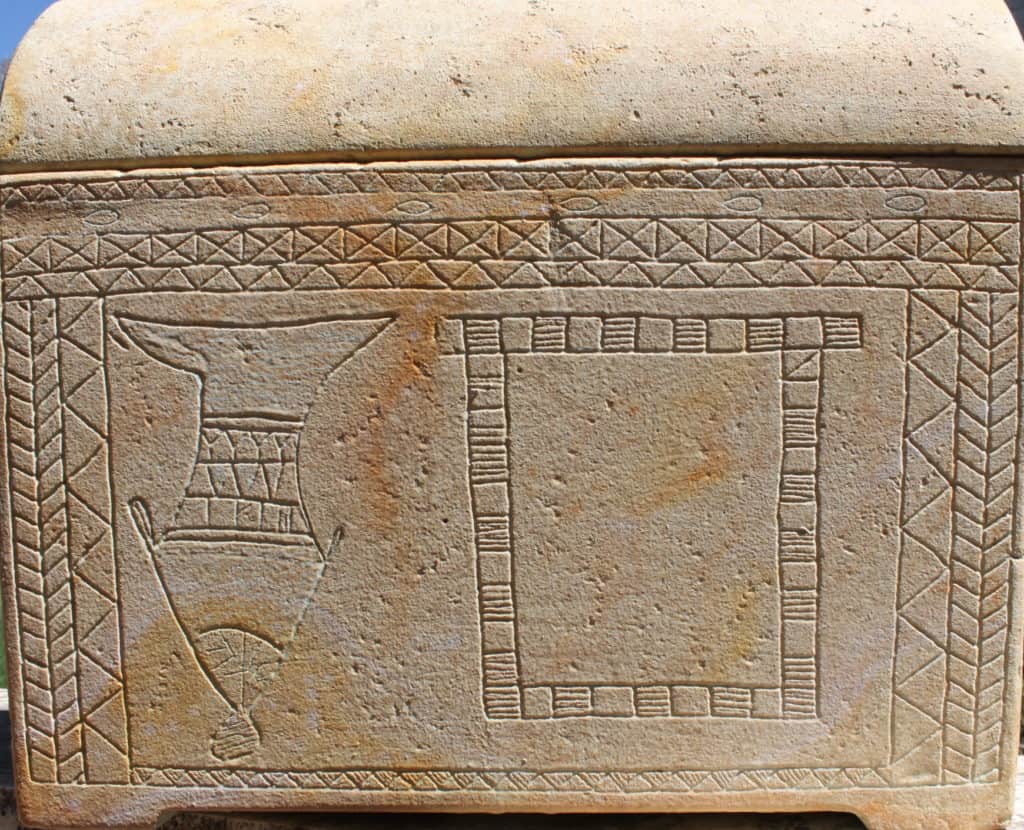
When I saw Kloner’s drawing I almost fell off my chair. It was an almost precise copy of our Jerusalem ossuary reproduction. The only problem is, he also leaves the inside of the “temple” structure blank–just as we did, though it is clear that anyone who was looking at the full unblocked face of the ossuary would have seen what is obviously inside the “temple” like structure. The “blank” is not blank–there is a substantial architectural feature plainly visible. When I heard Kloner had presented his drawings I was quite excited. I was even wondering or hoping there might be some kind of inscription inside that “blank” space–and now we would know at last. I leave it to readers to draw their own conclusions and I welcome any explanation from Prof. Kloner.
The main thing we could not see in our robotic probe, and which Kloner saw clearly enough to draw–but did not include–was what was on the panel opposite the “Jonah” image? One can only speculate and wonder if filling in that blank space might explain why Prof. Kloner would have repeated several times “I never saw such a thing, I never saw such a tomb.” Until we can remove all the ossuaries from the tomb and examine them carefully firsthand with full scientific tests (including I hope DNA tests) we have only the following hints from our partial view via the robotic camera probe.
Here the only photos we were able to obtain so that anyone interested might have a tiny “peek” at what lies inside the blank space. One in particular shows the beginnings of a substantial internal rectangular pattern, which became the basis for our “hangman’s gallows” in the original reproduction. These are the original untouched photos from our probe cameras and I realise they will appear somewhat dark here on this blog but those who wish to download them can easily lighten them up and sharpen the quality and you will be able to see quite a bit. We thought it best to present them here in their original state for anyone to work with who might be interested.

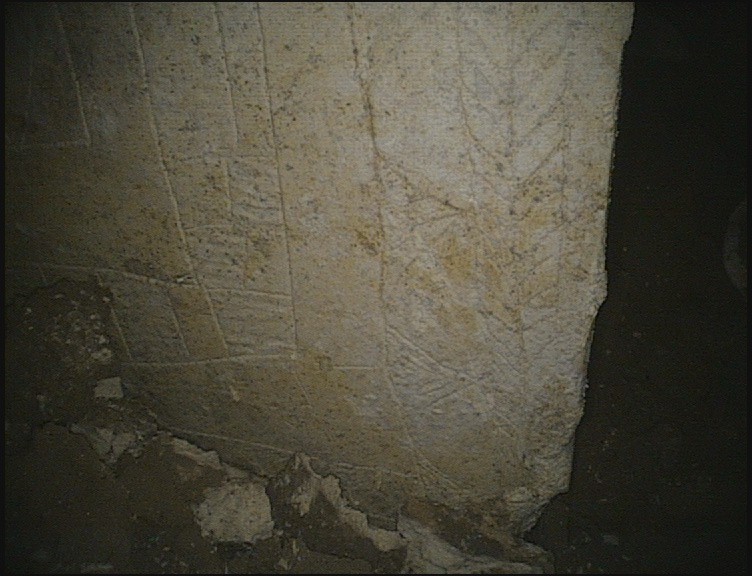







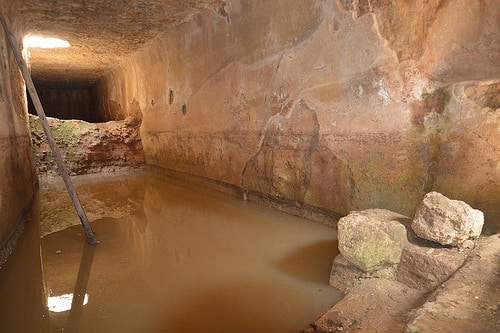
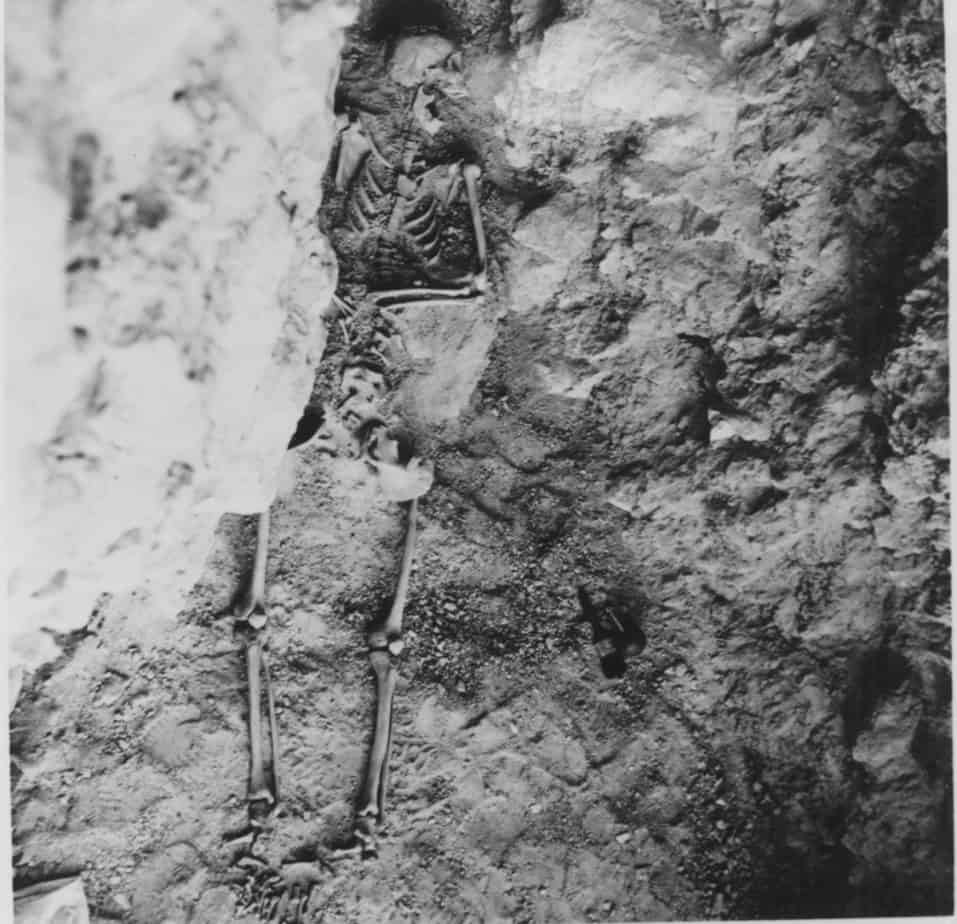
Comments are closed.